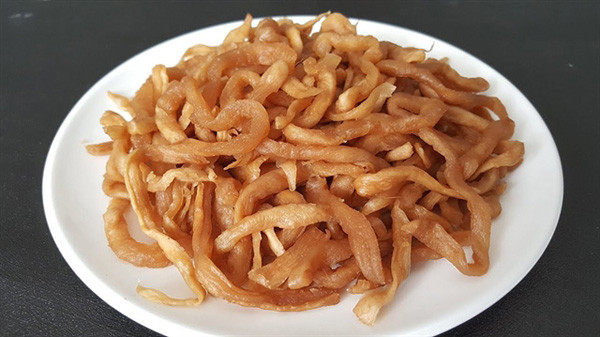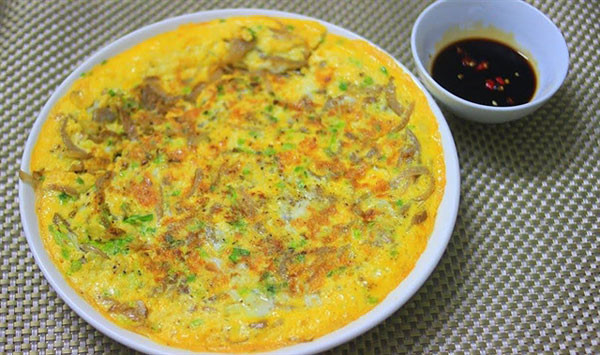My relative, Nguyen Thi Tuyet from the southern province, recently sent us two kilograms of xá bấu, saying the dish is more enjoyable when eaten with rice porridge.
Following her advice, I mixed the salted radish with vinegar, sugar, garlic, chilli and soy sauce, and cooked a pot of rice porridge, inviting all of my six family members to try it.

Tuyet was right. The xá bấu was crunchy with the taste of white radish and the salty, sweet-and-sour of these ingredients, making eaters more enjoyable.
My grandmother said it was the first time she had tried the dish.
“I’ve eaten many specialties from the country’s three regions, but this dish is special for me because, after one bowl of porridge, I still wanted more, even though I was already full,” she said.

Meanwhile, my 14-year-old nephew said he usually hated porridge, but this time he enjoyed it because of the salted radish.
“Mom, you should cook the dish every day as breakfast. I like it so much,” he said.
Tour guide Bui Thu Ha, a Soc Trang native, said for visitors and travellers from the north and the central regions, the name xá bấu may be strange or unheard of before. Still, it has been very popular among southwestern people since the early 19th century.

It was supposedly first brought by Chinese people migrants to Vietnam's southwestern provinces including Soc Trang, Ha said.
Ingredients include white radish, salt and sugar. The radish should not be too big or too small. It must be cleaned, cut out 8cm each, and cut into four pieces before being mixed with salt and dried in the sun.

Salted radish is light yellow and crunchy with a special flavour, Ha said.
The radish has been widely planted in Soc Trang, but the most famous is in Vinh Chau Town, Ha said. "Many households making salted radish to sell in local markets, while several big companies process high-quality salted radish to export it to Hong Kong, Singapore and the Chinese mainland, earning a higher price.
Apart from being eaten with porridge, xá bấu can be eaten with sticky rice, fried with eggs or pork belly.
“If you wish to sample these dishes, you can visit Soc Trang restaurants,” Ha advised.
Tran Thi Le in Vinh Chau Town said a tonne of fresh white radish after processing would give 120-130kg xá bấu with prices ranging from VND70,000-100,000/kilo.
The dish is packed in boxes so that visitors to Soc Trang can buy it as a gift for their families and friends,” Lệ said, adding that over the recent Tet (Lunar New Year holiday) several overseas Vietnamese from the US, Europe and the UK brought 10 kilos each.
Le sold several hundred kilograms of xá bấu during Tet.
It is an indispensable dish for local people at big parties such as weddings or anniversaries of death, Le said.
Source: Vietnam News